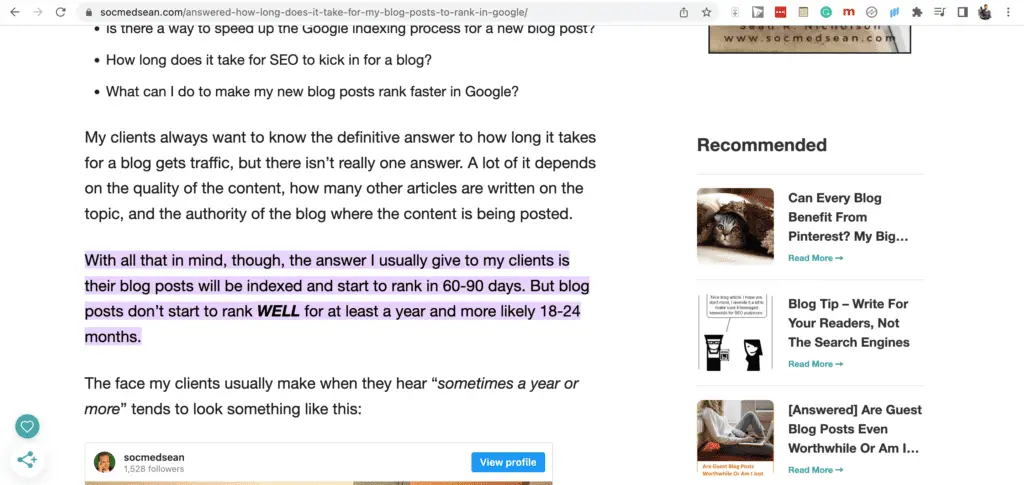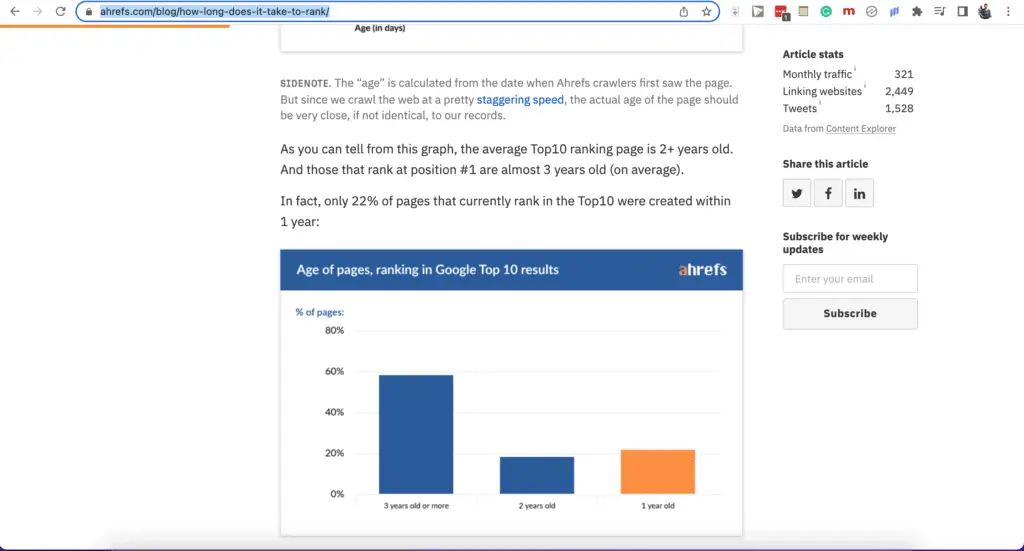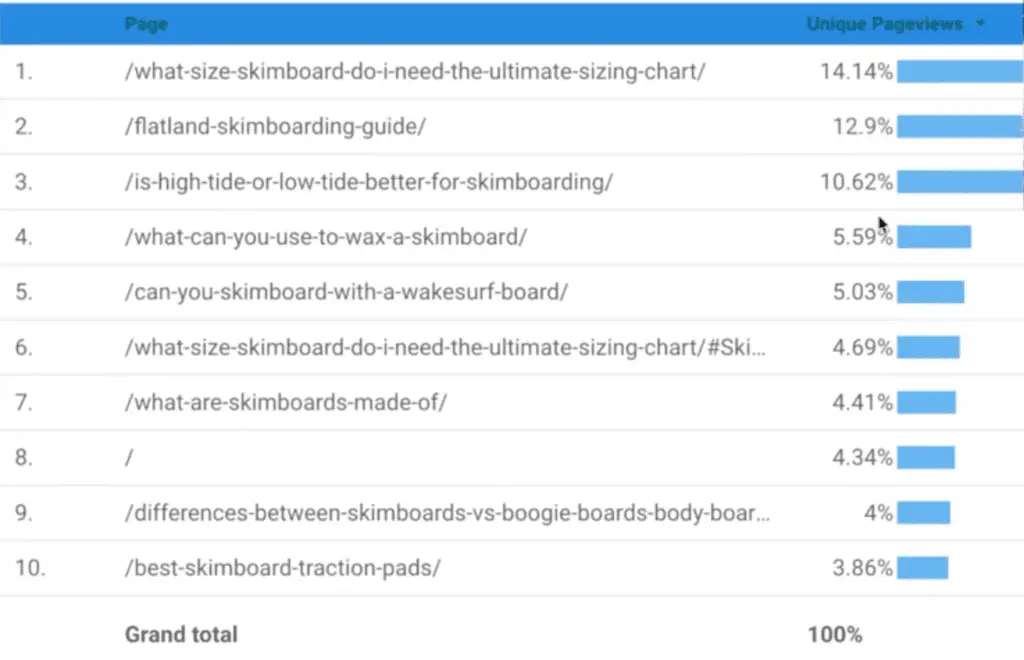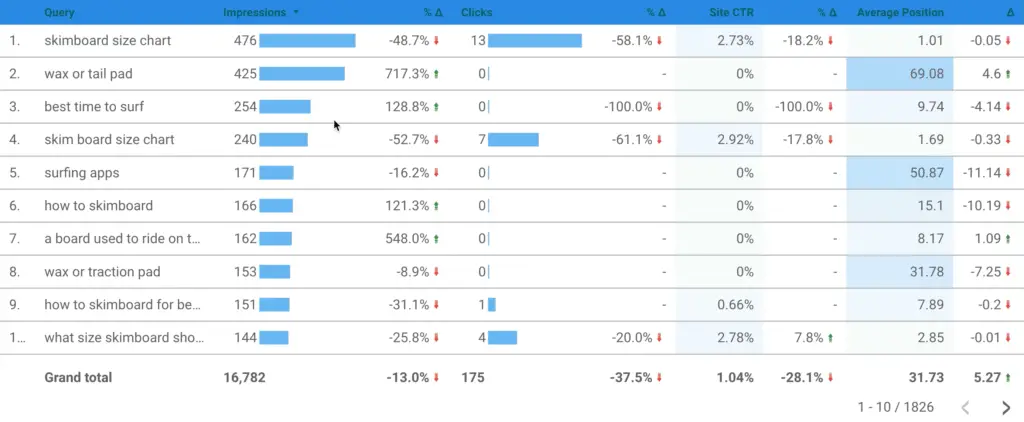I went from earning $0 as a side hustle to making a full-time income as a blogger, and while I can’t go back in time, I will share this case study with you, documenting the steps.
I created a new website, kauaisurfreport.com, once to see how much my time as a blogger is worth and how long I could earn from this one-time investment.
That’s 75 hours invested in writing 50 blog articles about skimboarding, and you can do this too with your niche site (a little more about that below).
If you need more proof that I am a full-time blogger or just want to read up on what I’m currently working on, check out my latest income report here.
I highly recommend signing up for Ezoic, especially for smaller sites like these where you won’t get accepted in other programs yet, but also for sites with a lot of non-US traffic like most of mine.
Ok, now let’s get into the details:
Ezoic case study: first month to month 5
75 hours invested, $41.91 from Ezoic display ads, and $34.61 from affiliate revenue.
Hey, that’s $1 per hour!
Now, it doesn’t sound like much yet but hear me out because it’s going to be amazing in a couple of months and you need to know why, so you can start earning passively from your blog as well.
I started this case study to see how much you could earn from a small site, something you could build in a month. So, at the end of March, I invested 75 hours of my time and wrote 2 articles per day.
We are now 5 months in, and I only started monetizing the site 2 months ago so we have 2 months of revenue data now.
How long does it take to start earning with your blog?
In last month’s video, I talked about the waiting game where you write these articles and almost nothing seems to happen.
Now you can’t just write a couple of articles and hope that it will start ranking. It doesn’t work like that.
You have to write them all because they all complement each other and let Google know you really know your stuff when it comes to your topic.
This case study shows you what’s possible with just a couple of articles, but you HAVE to commit if you want something like this for yourself.
I could do it within a month and 2 articles per day. I would rather have $32 per month in perpetuity than have seen all game of thrones episodes in one month.
Although, I can’t talk about GOT now at parties…
Ok, let’s decode this some more.
It’s all in the magic of compounding. Because that’s essentially what we’re doing here, compounding passive income from something I did at the end of March.
At first, it doesn’t seem like much, earning just $1 per hour. But unlike working for a living, I don’t have to do anything else for this money to come in.
I just did the work once so now every month I earn something from my blog my hourly rate goes up automagically.
There are two factors here that cause this to take a long time: the time it takes to rank and the time it takes to compound.
How long does it take to rank in Google?
The first is that it takes some time to rank with your site.
Socmedsean says it takes up to 90 days for google to index and rank your pages, but it can take up to 1,5 years for it to rank well.

And Ahrefs did a study and found that most pages ranking at position 1 in Google are over 3 years old!

Going for underserved topics and answering specific questions as I did in this case study can significantly reduce the time it takes to rank, but I am relying on some money pages as well like best skimboards, which can take a long time to surface on the first page of Google.
Those money pages with more competition might take a lot longer than the underserved topics.
Let’s look at some numbers from Google Analytics and Search Console.
Look at that growth, that’s so insane to me that that’s possible:

And looking at the first few months, it’s easy to think that nothing will happen even though you’ve invested so much time and energy into it.
Some will start ranking sooner, and some a little later.
The top 4 pages get almost 40% of my traffic, and sometimes you don’t know what will bring in traffic beforehand, like the very specific question “is high or low tide better for skimboarding?”:

As I’m gaining momentum, the rankings for different keywords start improving as well, as you can see in my Google Datastudio Dashboard:

You don’t need any paid tools to do this, and I’m happy to share my templates and blogging tips with you, just sign up for my secrets vault here.
Remember, the more you write, the better your blog starts ranking as you become an authority in your niche and while 50 articles may seem like a lot at first, it isn’t that much.
With this case study, I wanted to show you what’s possible with even a month of writing and I’ll keep you posted on the earnings in this article and on the Youtube channel, but you can learn right now how to answer specific questions and dominate search.
It’s what I show you in this blog post and entertaining video where I write 24 articles in 24 hours to please google quality content update with some helpful nuggets on how to write great posts.
Here’s a short overview of that strategy:
Ranking faster with underserved topics
Here’s what I did to get it up and ready for growth, and you can do this too very easily, without any paid tools.
This is NOT your typical keyword research or your best x for y type of writing, so be ready to answer questions your audience might have and really start helping people.
This works best if you’re actually interested in the topic, because you’re gonna learn all sorts of cool stuff about your niche. You are going to uncover all the questions people have asked Google.
Then, write complete and precise answers to those questions. You’re going to actually help people searching these questions start learning about your niche.
I spent 25 days writing 50 articles all about skimboarding for this site, answering all the questions people have about the topic.
That’s 2 articles a day, that’s something you can definitely do! Especially if you’re into the topic and doing research you might have done for a hobby anyway.
This is how you find the questions you’re going to answer.
Just head over to answersocrates.com and type in your topic.
And you need this to be really specific. Like, if you have a site about Japanese food, type in sushi.
Or if you have a site about surfing, type in skimboarding, as I did with this case study.
You’re going to go through all of these and answer those questions one by one. For me that was about 50 articles.
Then you’re going to create a what is skimboarding article and, if the topic lends itself to it, a review article, like best skimboards.
You do need to do some idiot proofing with these questions to group them into topics because some questions are very similar or ask about the same type of thing.
Some are obvious, like skimboarding on grass and on wet grass.
I find that if you go through them all, you’ll be able to group them as you write, go back to a previous article, and add a question here and there.
It’s like the army ants method I heard Morten Storgaard mention.
But if you’re really struggling with this, you can use 1 paid tool to group questions together into topics, and that’s KeywordCupid.
Most of these questions will be so specific, there won’t be a good article on them, so I piece together information from blogs here and there and questions answered on Reddit and Quora and just write those in my own words.
An article like that really shouldn’t take you more than 1,5 hours. That lets you answer it pretty thoroughly and well researched.
Once you have answered them, the only important thing left is to interlink them here and there, make sure every article has at least 1 internal link going to it, and link to the what is article and the review article from just about every blog post.
When you have written them all, the waiting begins. And that can be very frustrating….
Look at the graph for kauaisurfreport.com again. That’s almost no visible change for at least two months after I started writing.
That’s why writing just a couple of articles per month can leave you frustrated. It’ll take forever to get something going.
It’s like building train tracks, doing all the hard work, but not knowing if there’s anything good on the other side or if you’re headed for a cliff, you just can’t be sure.
But let me tell you, this case study has proven to me that it IS possible with no budget at all.
Compound earnings
The second thing holding you back from earning a nice hourly wage for your work is that it takes time for earnings to compound.
Compounding is where adding something on top of a previous thing causes the thing to get bigger by itself.
The first thing might not be much to look at on its own, but adding and adding more to it will turn it into quite an accomplishment.
So while I’m at $1 per hour now, in a few months, that will turn into a whopping $2 per hour!
Ok, still not much to look at, but compounding + ranking = a lot of waiting…. and a lot of passive income.
It’s like we say in The Netherlands “patience is a clean cause.”
Conclusion
I know how hard it is to start blogging, but successful case studies like this one helped me get through those first months of nothing happening.
I’ll keep you posted on the progress, and click on this link to learn how me and my team write blog articles even faster with Jasper
Joost Nusselder is The Content Decoder, a content marketer, dad and loves trying out new tools en tactics. He's been working on a portfolio of niche sites since 2010. Now since 2016 he creates in-depth blog articles together with his team to help loyal readers earn from their own succesful sites.

